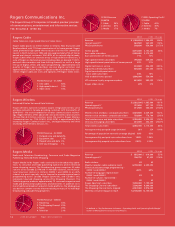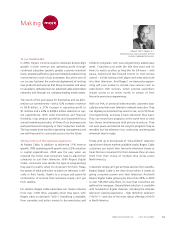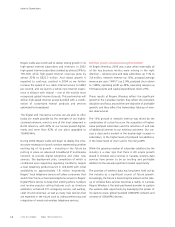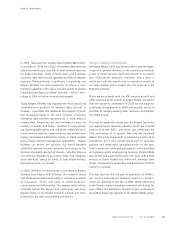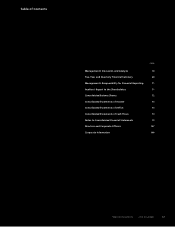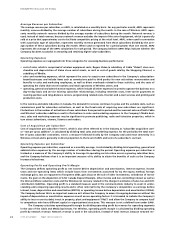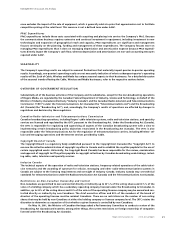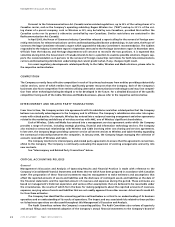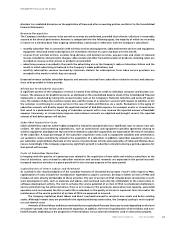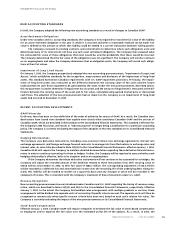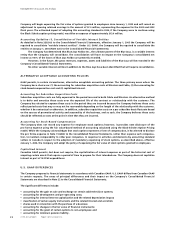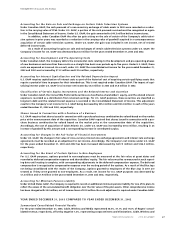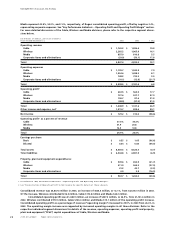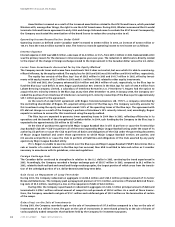Rogers 2003 Annual Report Download - page 22
Download and view the complete annual report
Please find page 22 of the 2003 Rogers annual report below. You can navigate through the pages in the report by either clicking on the pages listed below, or by using the keyword search tool below to find specific information within the annual report.
2003 Annual Report Rogers Communications Inc.
20
Management’s Discussion and Analysis
Average Revenue per Subscriber
The average revenue per subscriber, or ARPU, is calculated on a monthly basis. For any particular month, ARPU represents
monthly revenue divided by the average number of subscribers during the month. In the case of Wireless, ARPU repre-
sents monthly network revenue divided by the average number of subscribers during the month. Network revenue is
used, instead of total revenue, because network revenue excludes the impact of the sale of equipment, which is generally
sold at a price that approximates cost to facilitate competitive pricing at the retail level. ARPU, when used in connection
with a particular type of subscriber, represents monthly revenue generated from these subscribers divided by the aver-
age number of these subscribers during the month. When used or reported for a period greater than one month, ARPU
represents the average of the ARPU calculations for each period. The Company believes ARPU helps indicate whether the
Company has been successful in attracting and retaining higher value subscribers.
Operating Expenses
Operating expenses are segregated into three categories for assessing business performance:
• cost of sales, which is comprised of wireless equipment costs, Rogers Video (a subsidiary of Cable “Video”) store mer-
chandise and depreciation of Video store rental assets, as well as cost of goods sold by the Shopping Channel, a
subsidiary of Media;
• sales and marketing expenses, which represent the costs to acquire new subscribers in the Company’s subscription-
based businesses and include items such as commissions paid to third parties for new activations remuneration and
benefits to sales and marketing employees, as well as direct overheads related to these activities, and the costs of
operating the video chain store locations and retail operations of Wireless stores; and
• operating, general and administrative expenses, which include all other expenses incurred to operate the business on a
day-to-day basis and service existing subscriber relationships, including retention costs, inter-carrier payments to
roaming partners and long-distance carriers, programming related costs, Internet and e-mail services and printing and
production costs.
In the wireless and cable industries in Canada, the demand for services continues to grow and the variable costs, such as
commissions paid for subscriber activations, as well as the fixed costs of acquiring new subscribers are significant.
Fluctuations in the number of activations of new subscribers from period-to-period and the seasonal nature of both Cable
and Wireless’ subscriber additions result in fluctuations in sales and marketing expenses. In the Company’s Media busi-
ness, sales and marketing expenses may be significant to promote publishing, radio and television properties, which in
turn attract advertisers, viewers, listeners and readers.
Cost of Acquisition per Subscriber
Cost of acquisition per subscriber (“COA”), which is also often referred to in the industry as “subscriber acquisition cost”
or “cost per gross addition”, is calculated by dividing total sales and marketing expense, for the period by the total num-
ber of gross subscriber activations. COA is a measure followed closely by the Company and used most commonly in a
Wireless context and is generally in direct proportion to the level of ARPU and term of a subscriber’s contract.
Operating Expense per Subscriber
Operating expense per subscriber, expressed as a monthly average, is calculated by dividing total operating, general and
administrative expenses by the average number of subscribers during the period. Operating expense per subscriber is
tracked as a measure of the Company’s ability to leverage its operating cost structure across a growing subscriber base,
and the Company believes that it is an important measure of its ability to attain the benefits of scale as the Company
increases its business.
Operating Profit and Operating Profit Margin
The Company defines operating profit as net income before depreciation and amortization, interest expense, income
taxes and non-operating items which include losses from investments accounted for by the equity method, foreign
exchange gains, loss on repayment of long-term debt, gain (loss) on the sale of other investments, writedown of invest-
ments, the gain on the disposition of AT&T Canada Deposit Receipts, other income and non-controlling interest as well as
the 2002 workforce reduction costs and the Wireless net recovery related to the change in estimates of sales tax and CRTC
contribution liabilities. Operating profit is a standard measure used in the communications industry to assist in under-
standing and comparing operating results and is often referred to by the Company’s competitors as earnings before
interest, taxes, depreciation and amortization (EBITDA) or operating income before depreciation and amortization (OIBDA).
The Company believes this is an important measure as it allows the Company to assess its ongoing businesses without the
impact of depreciation or amortization expenses as well as non-operating factors. It is intended to indicate the Company’s
ability to incur or service debt, invest in property, plant and equipment (“PP&E”) and allow the Company to compare itself
to competitors who have different capital or organizational structures. This measure is not a defined term under GAAP.
The Company calculates operating profit margin by dividing operating profit by revenue for operating segments
in the case of the Cable and Media businesses. For Wireless, operating profit margin is calculated by dividing operating
profit by network revenue. Network revenue is used in the calculation, instead of total revenue, because network rev-




